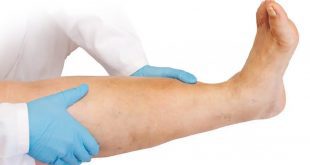Varicose veins are a common condition that affects millions of people worldwide. While they often appear in the legs, varicose veins can also develop in the feet and ankles, causing discomfort and aesthetic concerns. This article aims to explore the causes, symptoms, and treatment options for varicose veins specifically in the feet and ankles.
Causes of Varicose Veins in the Feet and Ankles
The development of varicose veins in the feet and ankles shares similar causes with those in other parts of the body. These underlying factors can include:
• Weak or damaged valves: Veins contain valves that help regulate blood flow. When these valves become weak or damaged, blood may pool in the veins, leading to their enlargement and the formation of varicose veins.
• Hereditary factors: A family history of varicose veins increases the likelihood of developing the condition. Genetic predisposition can affect the strength and structure of the veins, making them more susceptible to valve dysfunction.
• Prolonged standing or sitting: Occupations or activities that involve long periods of standing or sitting can contribute to the development of varicose veins. These prolonged periods of inactivity can impair blood circulation and increase pressure on the veins, leading to their dilation and the formation of varicosities.
Symptoms of Varicose Veins in the Feet and Ankles
Varicose veins in the feet and ankles can manifest with various symptoms, including:
• Visible, enlarged veins: The most apparent sign of varicose veins is the appearance of twisted, bulging veins that may be blue, purple, or green in color. These veins are often raised and can be easily seen through the skin.
• Pain and discomfort: Individuals with varicose veins in their feet and ankles may experience aching, throbbing, or a heavy sensation in the affected area. These symptoms may worsen after prolonged periods of standing or sitting.
• Swelling and edema: The pooling of blood in the affected veins can lead to swelling in the feet and ankles. Edema, or the accumulation of fluid, may also occur, causing the affected area to feel tight or tender.
Treatment Options for Varicose Veins in the Feet and Ankles
Several treatment options are available for managing varicose veins in the feet and ankles. The choice of treatment depends on the severity of the condition and individual patient factors. Some common options include:
• Lifestyle modifications: Simple lifestyle changes can help alleviate symptoms and prevent further progression of varicose veins. These may include regular exercise to improve circulation, maintaining a healthy weight, elevating the legs while resting, avoiding prolonged periods of standing or sitting, and wearing compression stockings.
• Adhesives: The newer non-thermal, non-tumescent techniques do not require the use of tumescent anesthesia and include cyanoacrylate glue, VenaSeal, Clarivein, and the proprietary endo venous micro-foam, Varithena. The advantages of non-thermal non-tumescent techniques, apart from fewer needle sticks and the discomfort associated with tumescent anesthesia, include the lack of heat-induced thrombosis and skin injuries.
• Sclerotherapy: This minimally invasive procedure involves injecting a solution into the affected veins, causing them to collapse and eventually fade away. Sclerotherapy is commonly used for smaller varicose veins and spider veins.
• Endo venous laser treatment (EVLT): EVLT uses laser energy to heat and seal off the affected veins, redirecting blood flow to healthier veins. This procedure is effective for larger varicose veins and is usually performed under local anesthesia.
• Microphlebectomy: Also known as ambulatory phlebectomy, microphlebectomy is the removal of varicose veins in the leg without surgery. Veins are flexible and collapse easily, and even some large veins can be removed through small nicks in the skin. Microphlebectomy is often done to complement endo venous laser ablation and radiofrequency ablation. It offers not only symptomatic relief, but can also make you less self-conscious about the look of your legs.
Varicose veins in the feet and ankles can cause discomfort and affect one’s quality of life. Understanding the causes, recognizing the symptoms, and exploring available treatment options are essential for managing this condition effectively. While lifestyle modifications can help alleviate symptoms, medical interventions such as sclerotherapy, EVLT, and vein stripping may be necessary in more severe cases. If you experience symptoms of varicose veins in your feet and ankles, it is recommended to consult with a healthcare professional who specializes in vein disorders for a proper diagnosis and personalized treatment plan.
Because of the potential for serious side effects and complications, it’s important to get any bulging, painful varicose veins looked at by a professional. At Central Florida Vein and Vascular Center, our team of board-certified, fellowship-trained vascular surgeons is equipped with the experience and resources necessary to deliver high-level comfort and care.
We treat patients of all ages, offering a wide range of minimally invasive treatments. We are dedicated to discussing all treatment options with you and ensuring you understand all aspects of your venous care. Whether you are experiencing tender veins or ulcers, we’ll diagnose your condition and come up with an advanced, minimally invasive treatment plan based on your specific needs.
Visit CFVein.com for more detailed information about (Varicose Veins in the Feet and Ankles) and other expert advice related to healthy, pain free legs.
Central Florida Vein & Vascular Center
(352) 562-0078 . www.cfvein.com
13953 NE 86th Terrace, Unit 101
Lady Lake, FL 32159
MOST PROCEDURES ARE
COVERED BY INSURANCE
Convenient Golf Cart Path Access
• Mayo Clinic. (2021). Varicose Veins. Retrieved from
https://www.mayoclinic.org/diseases-conditions/varicose-veins/symptoms-
causes/syc-20350643
• Society for Vascular Surgery. (n.d.). Varicose Veins and Spider Veins. Retrieved
from https://vascular.org/patient-resources/vascular-conditions/
varicose-veins-and-spider-veins
 Central Florida Health and Wellness Magazine Health and Wellness Articles of the Villages
Central Florida Health and Wellness Magazine Health and Wellness Articles of the Villages



